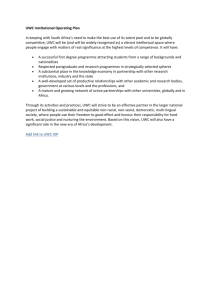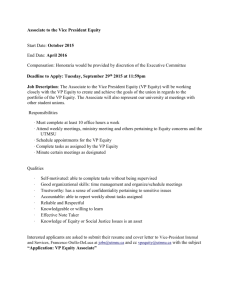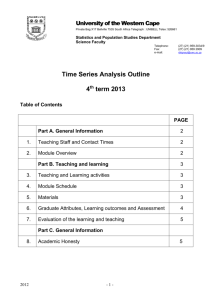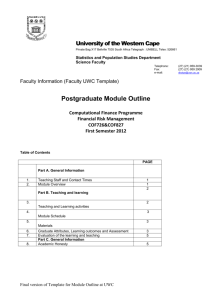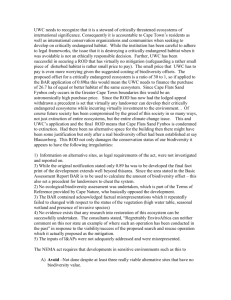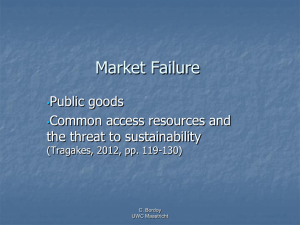UWC Employment Equity Plan Communication Strategy
advertisement
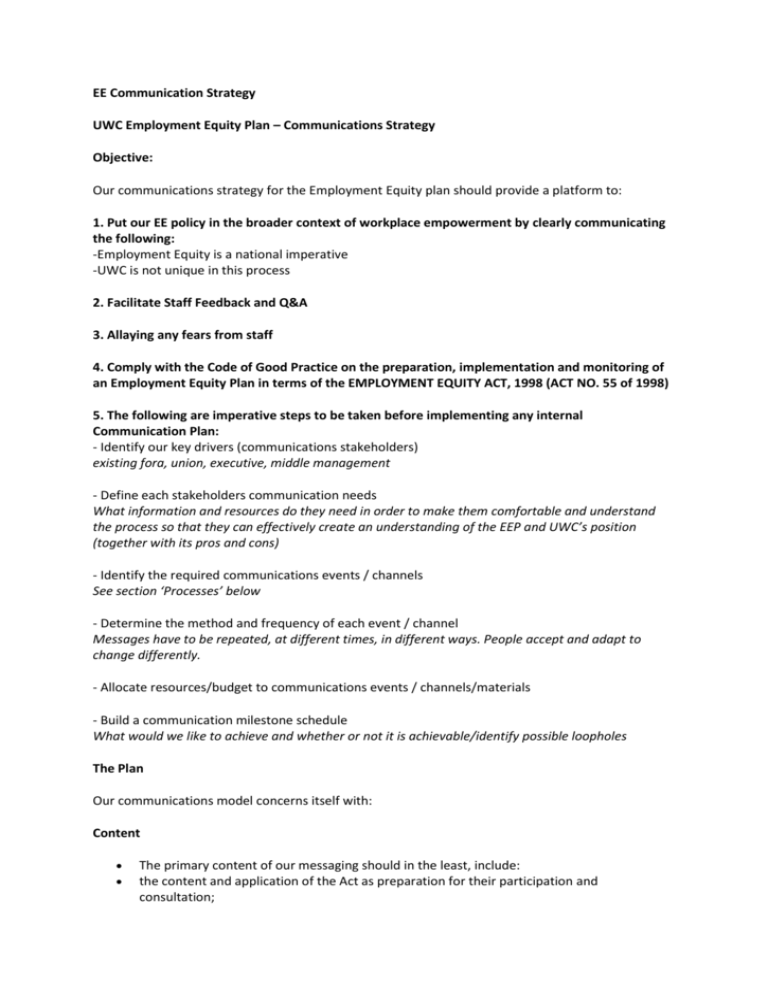
EE Communication Strategy UWC Employment Equity Plan – Communications Strategy Objective: Our communications strategy for the Employment Equity plan should provide a platform to: 1. Put our EE policy in the broader context of workplace empowerment by clearly communicating the following: -Employment Equity is a national imperative -UWC is not unique in this process 2. Facilitate Staff Feedback and Q&A 3. Allaying any fears from staff 4. Comply with the Code of Good Practice on the preparation, implementation and monitoring of an Employment Equity Plan in terms of the EMPLOYMENT EQUITY ACT, 1998 (ACT NO. 55 of 1998) 5. The following are imperative steps to be taken before implementing any internal Communication Plan: - Identify our key drivers (communications stakeholders) existing fora, union, executive, middle management - Define each stakeholders communication needs What information and resources do they need in order to make them comfortable and understand the process so that they can effectively create an understanding of the EEP and UWC’s position (together with its pros and cons) - Identify the required communications events / channels See section ‘Processes’ below - Determine the method and frequency of each event / channel Messages have to be repeated, at different times, in different ways. People accept and adapt to change differently. - Allocate resources/budget to communications events / channels/materials - Build a communication milestone schedule What would we like to achieve and whether or not it is achievable/identify possible loopholes The Plan Our communications model concerns itself with: Content The primary content of our messaging should in the least, include: the content and application of the Act as preparation for their participation and consultation; employment equity and anti-discrimination issues; the proposed process to be followed by the management; the advantages to employees of participation in the process, and the need for the involvement of all stakeholders in order to promote positive outcomes. Integrate messaging through existing UWC channels: On-Campus Website (on-line messaging) Groupwise Executive/Management speaking engagements (‘road show’) Interactive events Processes The ways in which we’ll facilitate the communications process: Host EE policy briefing with Department Heads, Line Managers, HR Forum, Union, etc in the Library Auditorium. Said managers will in turn host similar briefings within their departments. Source EE / HR Expert to write monthly column in On-Campus. Integrate positive messaging regarding employment equity through existing marketing campaigns (ODPA) Post regular progress reports on UWC Website or Shared drive. Feedback Feedback is critical. The process by which the staff population get opportunities to voice their concerns and interpretation of the EE policy. Set up e-mail address; eeplan@uwc.ac.za and invite comments and questions from staff. Major concerns to be generally addressed in monthly On-Campus column. Host regular meetings with Department Heads, Line Managers, HR Forum, Union, etc to gauge and address feedback and concerns from staff. Analysis Analysing the staff feedback and measure the general level of understanding and consensus on the EE policy. Management should then review their approach and strategise accordingly. Notes: A concerted communication campaign that enjoys the support of top management will lend credibility to the implementation process. Depending on existing skills and capacity to implement the required elements of the Employment Equity Policy, this communication campaign could extend into a training component. Critical Success factors: Across campus and stakeholder support is vital for support and assistance. Align the content and timing of communications with overall strategies and priorities of the University Messages should be clear and consistent Decide who the designated persons are to communicate messages and stick to this. These designated communicators need to be credible and trustworthy. Repeat the message in different ways and at different times - people learn and adapt differently Measure and evaluate the communications. Check for understanding; feedback is critical Senior management must actively demonstrate support for the communications events. Line managers must also support and provide legitimacy to the communications processes Correct communications channels must be used; eg, if messages are sensitive, perhaps email is not the most appropriate medium.
